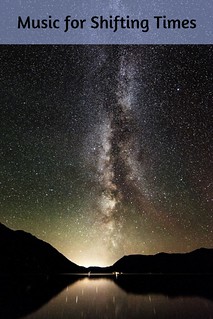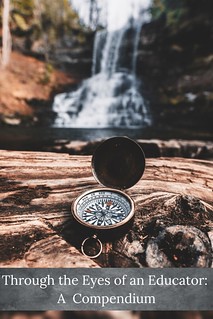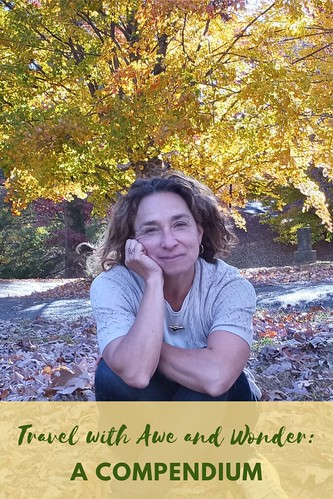Through the Eyes of an Educator: Shine Your Light
“There are two ways of spreading light: to be the candle or the mirror that reflects it.” - Edith Wharton
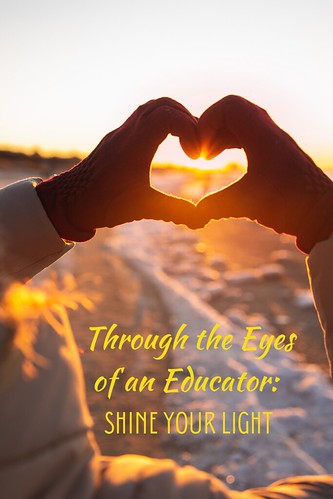
In the northern hemisphere, we’re in the time of winter’s approach. The air gets colder, the animals turn toward hibernation, and sunlight dwindles. The fourth quarter of the year is often filled with hustle and bustle, holidays and activities aplenty, and a shift from the longer days of life outside to those shorter ones often more indoors.
For many, it’s a difficult time of sensory overload, big emotions, and feelings of FOMO or funk. While the weather may tell us we’re approaching a period of dormancy, we are simultaneously nearing one of transition, growth, and renewal.
Dad and I never liked the cold. Until Elsa came along, winter and I were not even on speaking terms, forget singing ones. Yet, oddly enough, I always looked forward to the winter solstice. While it’s strange that a human who would happily play in eternal summer would look toward the shortest day of the year, for me, it was more about that turning point.
The moment the sun sets on the 21st, we’re gifted one extra moment of light each day. I choose to focus on the solstice marking the return toward the light.

As an educator, that’s one of the zillions of things we aim for with our students.
We all enter the world with a light, a spark, and an eye towards curiosity, learning, and growth. While sometimes life gets in the way of that light, like the sun, we can find a way to return. Whether you’ve been that student or know that young person, you know.
Life throws us frenetic energy and flings glittery objects to zap our attention, sometimes blocking that light from within. While we need time to rest, recover, and find ourselves again, it’s plausible that we all need a little bit of help sometimes to recapture that inner light.
Take a moment.
Look up in the sky for a second. Consider that brilliant ball of energy sparkling at you. Is she clear where you are? Are there clouds blocking her rays? Has she been able to fill the sky with endless hues, or are other elements masking her beauty today? From morning till night, she shines—and whether or not we can see that full resplendence, it’s always there. Like people, sometimes that access is blocked, but nothing can ever dull that inner sparkle.
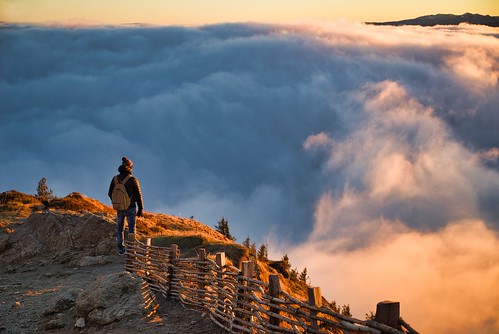
Toddlers enter their nursery school rooms eager to explore, wander, play, and discover. First graders open their books ready to find adventure through their reading journey. Between those early learning years and graduation, it’s anybody’s guess.
Each individual has their own journey accompanied by struggles, triumphs, detours, development, obstacles, and outstanding moments. That light waxes and wanes throughout the years. In schoolhouses, informal learning spaces, and the world at large, educators help students ignite, reignite, and stoke that inner light.
Amidst it all, one of the great gifts is to help students learn tools to do that on their own, ask for help when they need it, and know that just as the sun takes moments of rest when she needs it, it’s perfectly normal for humans to do that, too.
People aren’t robots. We don’t work at full capacity with the flip of a switch and can’t be charged at the drop of a hat. Our batteries replenish with rest.
Our minds, spirit, body, and soul need more than books and cleverness.
Our classrooms are filled with individual students, and each of those individual students will need a different switch, lever, or adapter to reboot that light. Purpose, community, time, rest, compassion, focus, resilience, heart, support, nature, healing, or deep inner work—whether that student is young in age or young at heart, there is time and help to endeavor to reignite that spark.

Just the other day, I saw a commercial for the movie Nyad. An exchange between the two leads, Diana and Bonnie (Annette Benning and Jodie Foster), got my attention. “Don’t you want to be fully engaged, fully awake? Your soul ignited by purpose, a mission? It would be an amazing ride.” That sentiment, that fullness, that lightbulb moment when the child in class gets it, when the light returns, when you feel like you again? It’s inspirational—and it’s in each and every one of us in our own way. When the world tells you no, when the rejections arrive, when the naysayers are loud, when we have to search to find it, and even in the throes of winter, our innate capacity to seek and shine is ever present.
Some may see December’s solstice as the longest day of darkness. I choose to look to the first moments after that equinox. More space, more time to shine. A brighter day ahead. A greater brilliance.
As we soon close the book on this year’s chapter and open the calendar page anew, can we make room for more light, more wonder, more glitter and glimmers, and give ourselves and our students permission to shine as brightly as possible?
Whether or not we feel like it, whether or not it’s witnessed by others, that brightness is in you. It’s time to set it free. You’re worth it.
Shine on, friends.

“People are like stained glass windows. They sparkle and shine when the sun is out, but when the darkness sets in their true beauty is revealed only if there is light from within.” - Elisabeth Kubler-Ross
4 Ways to Encourage our Light to Shine
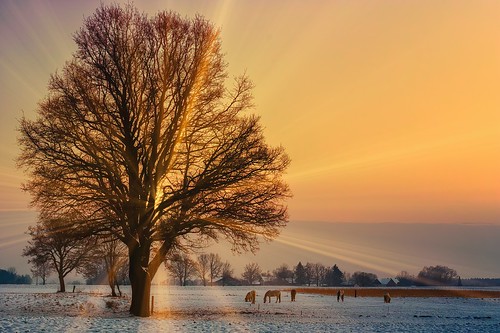
“If everything around seems dark, look again, you may be the light.” - Rumi
Channel the heliotropic effect
Sunflowers show us a perfect example of leaning toward the light. Whether human or nature, our natural inclination to tend towards the light is, in itself, life-giving. Puppies plant themselves in sunlit windows and doctors remind patients of the power of vitamin D. All living beings need that sunlight. For some, describing this theoretical phenomenon is enough to remind us of the magic of light. While practical applications involve getting outdoors, purchasing a light box for those colder or darker regions, and paying attention to our circadian rhythms, what can we do to build a community of that idea of light and lightbringers?
Well known in positive psychology circles, Professor Kim Cameron of the University of Michigan Ross School of Business has focused on people as positive energizers. Like the sunflower drawn to the sunlight, humans are drawn to those who feel the same way. Those quotes that tell us to hang close to people who feel like sunlight, they’re real. Positive energizers feel like that, and Professor Cameron tells us how. “People who emit positive energy that helps us flourish…these people express the virtues, such as authenticity, kindness, generosity, gratitude, forgiveness, and integrity, just to name a few…they’re at the core of thriving relationships…Think warm smiles, genuine hospitality, and a commitment to follow through. These qualities are put into action by these positive energizers.” (psychologytoday)
Anyone is capable of being a positive energizer. As we head toward the close of the calendar year, we, too, can lean in that direction of light.
Be the good, share your kindness, practice and express gratitude, show humility, exhibit authentic appreciation to the world around you, be compassionate toward others, notice and uplift people.
With each act, we strengthen our capacity for light.

“Hope is being able to see that there is light despite all the darkness.” - Desmond Tutu
Find your glimmers
Have you heard of glimmers? The antithesis of triggers, glimmers (conceptualized and coined by social worker Deb Dana) are “small moments when our biology is in a place of connection or regulation, which cues our nervous system to feel safe or calm.” (usatoday)
Bringing more than joy with them, these powerfully positive micro-moments can change our brains.
Sparking our neurology with feelings of safety, ease, and good, noticing these magical moments can be beneficial for all of us. The hummingbird who flits for a moment in front of you, snowflakes, the puppy playing with a ball…noticing and marking these positive moments shift our nervous system.
The brain’s natural tendency is to be on the lookout for negative or bad; seeking glimmers shapes our entire system to become more attuned to something else. Research tells us that once we begin to notice these positive moments, we look for more and continue to find them. Glimmers back Monty Python’s Always Look on the Bright Side of Life with tested science.
Keep looking.
Glimmers will not only add wonder and awe to your day, but science agrees it’s good for our full body health.

“There’s a crack in everything, that’s how the light gets in.” - Leonard Cohen
Appreciate the cracks
Years ago on one of those masters-at-work kind of shows, I learned about kintsugi, the Japanese art of rebuilding broken pieces with bits of gold. Mindful of the flaws, cracks, and imperfections of the artwork, shards of shiny, brilliant gold reclaim strength and resilience of once-shattered pieces. This ancient technique of mending not only rebuilds anew, but quite literally shines a spotlight on the initial scar. It’s a poignant and unique part of the new creation.
While humans are not equivalent to pottery, kintsugi is a reminder that the focus, even in a broken moment, can be helped, healed, and rebuilt with a bit of golden light. Often, we feel like we are on a continual hamster wheel of life. On the go, striving for more, busy in all aspects of the mental and the physical. People aren’t built for that constant movement, and sometimes we find moments where our forcefield cracks a bit.
Perhaps it’s not about hiding that crack, but by showcasing the scars, it highlights our natural human light.

“Let nothing dim the light that shines from within.” - Maya Angelou
Normalize rest
When I was teaching high school students and running countless school events, I was sick at least four times a year. October was homecoming and it seemed as though one minute it was the 1st and in the blink of an eye the 31st. No rest, constant energy, seasonal shifts, and utter joy mixed with utter exhaustion…yup, you could set your clock by my case of laryngitis and bronchitis. Rest didn’t enter my wheelhouse then; let’s just say I’m truly grateful that it’s present today. I was guilty of thinking rest wasn’t for me, I could push through, slowing down is a bad thing, a kind of black and white thinking.
I was wrong.
Rest isn’t optional. Rest doesn’t have to be earned. Rest is vital for wellbeing.
What’s more, “it is okay to slow down. If wider society does join in with truly upholding rest as something necessary and accepted for a happier, more fulfilling life, and not another transaction, those that need the rest most will benefit.” (cosmopolitan)
It’s radically necessary to acknowledge that for some, rest isn’t something to choose, it’s an ever-present part of life. Stressors, medical issues, challenges, obstacles, chaotic minds, low energy?
Rest.
Take the time, shut the lights, close the book, turn off the television, block out the noise, and rest.
You are enough as you are, and you’ll still be enough, perhaps even a more brilliant you when you emerge.

Please click the photo below for a collection of my Through the Eyes of an Educator columns:
Stacey Ebert, our Educational Travels Editor, is a traveler at heart who met her Australian-born husband while on a trip in New Zealand. Stacey was an extracurricular advisor and taught history in a Long Island public high school for over fifteen years, enjoying both the formal and informal educational practices. After a one year 'round the world honeymoon, travel and its many gifts changed her perspective. She has since left the educational world to focus on writing and travel. She is energetic and enthusiastic about long term travel, finding what makes you happy and making the leap. In her spare time she is an event planner, yogi, dark chocolate lover, and spends as much time as possible with her toes in the sand.
Check out her website at thegiftoftravel.wordpress.com for more of her travel musings.



